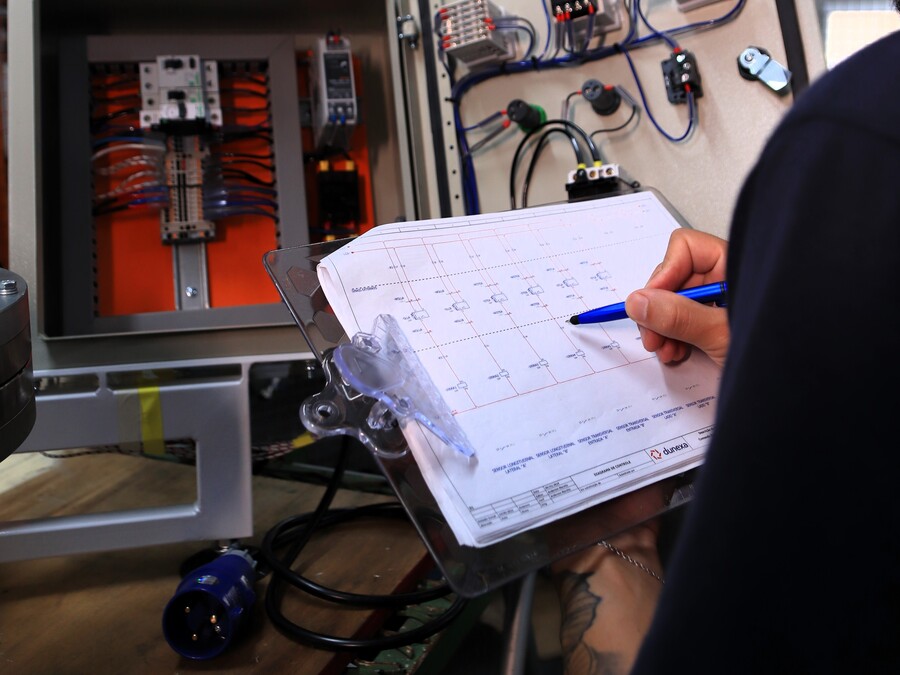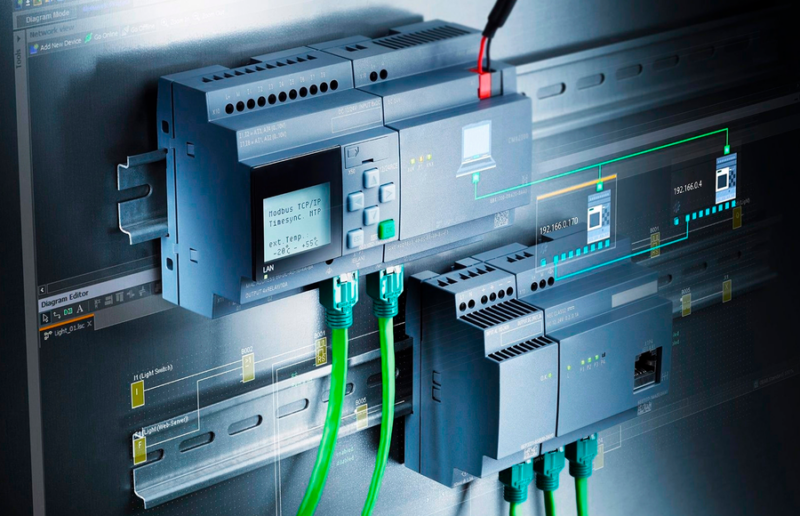Importance of Industrial Automation in Electrical Engineering
Published on
28 de junho de 2024
Industrial automation is revolutionizing the electrical engineering sector, driving significant advancements in efficiency, precision, and productivity.
The global industrial automation market is rapidly expanding. In 2020, it was valued at approximately $157 billion and is projected to reach $296.7 billion by 2026, with a compound annual growth rate (CAGR) of 9.3%.
This demonstrates that integrating automated systems into industrial processes is not just a trend, but a necessity for companies. It is an essential process for brands looking to remain competitive in an increasingly demanding global market.

Industrial Automation
Industrial automation refers to the use of technologies such as programmable controllers, SCADA (Supervisory Control and Data Acquisition) systems, sensors, actuators, and industrial networks to monitor and control processes and machinery. In electrical engineering, this translates into smarter designs, where automated systems replace or assist manual labor, optimizing operations and reducing the margin for human error.
Implementing industrial automation involves several crucial steps, from initial planning to execution and ongoing maintenance. Here’s a basic guide to help you start this journey:
Needs Assessment
First and foremost, it is essential to conduct a detailed assessment of the company’s needs. It’s important to define which processes can be automated and what the primary objectives are, such as cost reduction, increased productivity, or improved quality.
Choosing the Right Technologies
Based on this information, select the most suitable technologies for your project. This could include PLCs (Programmable Logic Controllers), various types of sensors, industrial communication systems (like Modbus, Profibus), and others.
Project Development
Once the choices are made, it’s time to structure a detailed plan that includes electrical schematics, control logic, and communication requirements. This phase may involve collaboration between electrical engineers, automation engineers, and IT specialists.
Implementation
With the project in hand, it’s time to implement the chosen systems. This may involve hardware installation, control software development, and the integration of existing systems.
Testing and Commissioning
However, implementation is just the beginning. To ensure successful outcomes, all systems must be rigorously tested to ensure they work as planned. This involves simulating different operational scenarios, adjusting parameters, and resolving any issues that arise. Commissioning is the final phase, where systems are put into operation and closely monitored to ensure optimal performance.
Team Training
Finally, automation is a transformative process that creates a more optimized work environment. Therefore, it is essential to invest in team training to ensure the success of the automation process. Operators and technicians must understand how to use and maintain the new systems. Investing in proper training ensures that employees can effectively operate and troubleshoot the systems.
Maintenance and Upgrades
Additionally, since automation is not a static process, regular maintenance and continuous software updates are essential to keeping the systems running efficiently. Implementing a preventive maintenance plan can prevent unexpected failures and extend the equipment’s lifespan.

Benefits of Industrial Automation
This entire process offers specific benefits and advantages for companies:
Increased Productivity
Automated systems can operate 24/7 without interruptions, significantly boosting production. The ability to run at constant, optimized speeds results in higher production volumes in less time.
Improved Quality
Automation ensures consistency and precision, reducing variability and human error. This results in high-quality products with a lower rejection rate, meeting the stringent quality standards of the market.
Reduced Operational Costs
While the initial implementation of automation may be costly, operational costs decrease in the long run. Fewer failures, less material waste, and reduced direct labor needs contribute to overall cost savings.
Workplace Safety
Automated industrial environments are generally safer, as they reduce workers’ exposure to hazardous conditions. Machines can perform risky tasks, minimizing the chance of workplace accidents.
Flexibility and Scalability
Automated systems can be reprogrammed to accommodate different processes and products. This provides significant flexibility to adapt to market changes and customer demands.
Real-Time Monitoring and Control
With automation, it’s possible to monitor and control processes in real time. SCADA systems and other software allow operators to identify problems immediately, adjust parameters, and continuously optimize production.
Industrial automation is a key component in the evolution of electrical engineering. Its implementation, while challenging, offers significant rewards in terms of productivity, quality, safety, and cost reduction.
Companies that invest in automation are better positioned to face the challenges of the modern market, staying competitive and innovative. The key to success lies in careful planning, selecting the right technologies, and properly training the team.
With these elements in place, automation can transform industrial processes and drive sustainable growth.